Complete Solutions to LEVEL 3 (PASSAGE TYPE) of chapter p-BLOCK ELEMENTS of Class 12 book with complete answers and questions
| Class 12 | CHEMISTRY |
| Chapter | p-BLOCK ELEMENTS |
| VK JAISWAL | LEVEL 3 (PASSAGE TYPE) |
| Number Of Questions | 20 |
| Academic Year | 2023-24 |
Each oxy-acid contains at least one X-OH unit (X is non-metal). The H-atom of X-OH unit is ionisable and the number of -OH groups directly attach to non-metal decides the basicity of oxy-acid.
Q. Which of the following oxy-acid does not have its peroxy form having two central atoms?04:15View SolutionEach oxy-acid contains at least one X-OH unit (X is non-metal). The H-atom of X-OH unit is ionisable and the number of -OH groups directly attach to non-metal decides the basicity of oxy-acid.
Q. Which of the following oxy-acid does not have its peroxy form having two central atoms?04:15View SolutionEach oxy-acid contains at least one X-OH unit (X is non-metal). The H-atom of X-OH unit is ionisable and the number of -OH groups directly attach to non-metal decides the basicity of oxy-acid.
Q. Which of the following oxy-acid does not have its peroxy form having two central atoms?04:15View SolutionFormation of a bridge bond is best explained by molecular orbital theory. According to which a bridge bond is formed by filling electrons into molecular orbital which spread over three nuclei hence such bonds are speciified as three centered bond.
Q. In which of the following dimer emtpy atomic orbit of central atom of monomer does not involve in hybridization:View SolutionFormation of a bridge bond is best explained by molecular orbital theory. According to which a bridge bond is formed by filling electrons into molecular orbital which spread over three nuclei hence such bonds are speciified as three centered bond.
Q. In which of the following compound hybridization of bridging atom is differennt from hybridisation of central atom:View SolutionFormation of a bridge bond is best explained by molecular orbital theory. According to which a bridge bond is formed by filling electrons into molecular orbital which spread over three nuclei hence such bonds are speciified as three centered bond.
Q. Which of the following compound is having number of atoms in same plane?View Solution(i) `P+C("carbon")+Cl_(2) to Q+CO uaarr`
(ii) `Q+H_(2)O to R+HCl`
(iii) `BN+H_(2)O to R+NH_(3) uarr`
(iv) `Q+LiAlH_(4) to S+LiCl+AlCl_(3)`
(v) `S+H_(2) to R+H_(2) uarr`
(vi) `S+NaH to T`
(P,Q,R,S annd T do not represent their chemical symbols)
Q. Compound Q has:
(I) zero dipole moment.
(II) a planar trigonal structure
(III) an electron deficient compound
(IV) a lewis base
Chose the correct code:09:06View Solution(i) `P+C("carbon")+Cl_(2) to Q+CO uaarr`
(ii) `Q+H_(2)O to R+HCl`
(iii) `BN+H_(2)O to R+NH_(3) uarr`
(iv) `Q+LiAlH_(4) to S+LiCl+AlCl_(3)`
(v) `S+H_(2) to R+H_(2) uarr`
(vi) `S+NaH to T`
(P,Q,R,S annd T do not represent their chemical symbols)
Q. Compound T is used as a/an:11:50View Solution(i) `P+C("carbon")+Cl_(2) to Q+CO uaarr`
(ii) `Q+H_(2)O to R+HCl`
(iii) `BN+H_(2)O to R+NH_(3) uarr`
(iv) `Q+LiAlH_(4) to S+LiCl+AlCl_(3)`
(v) `S+H_(2) to R+H_(2) uarr`
(vi) `S+NaH to T`
(P,Q,R,S annd T do not represent their chemical symbols)
Q. Compound S is:
(I) an odd `e^(-)` compound
(II) `(2c-3e^(-))` compound
(III) a electron deficient compound
(IV) a `sp^(2)` hybridized compound
Choose the correct code:11:50View Solution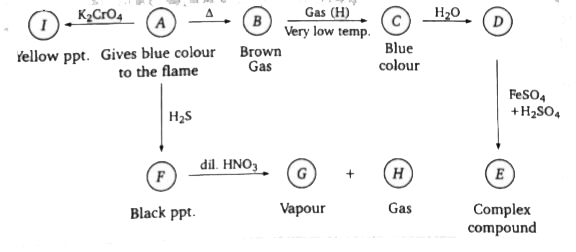
Q. Compound `(D)+I^(-)+H^(-) to `Gas
Evolved gas is similar to:View Solution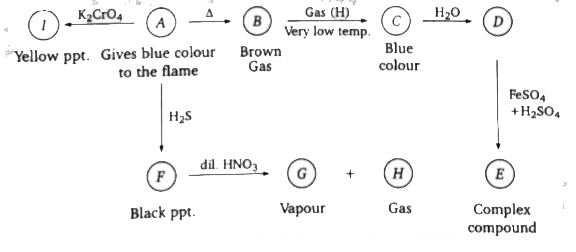
Q. Yellow ppt. of compound (I) is insoluble in:View Solution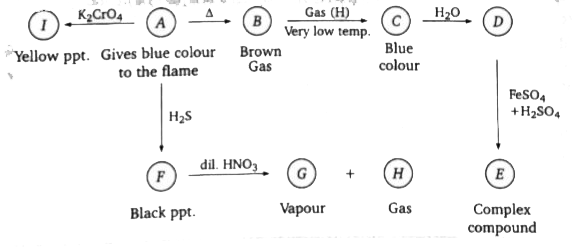
Q. type of hybridization of central atomo of gas (B) is:View SolutionThe following flow diagram represent the industrial preparation of nitric acid from ammonia:
`NH_(3)+underset(("excess air"))(O_(2)) underset(900^(@)C)overset((X))NO underset(air)overset((Y))to(Z)overset("water")toHNO_(3)+NO`
Q. Which line of entry describes the undefined reagents, products and reaction conditions?02:58View SolutionThe following flow diagram represent the industrial preparation of nitric acid from ammonia:
`NH_(3)+underset(("excess air"))(O_(2)) underset(900^(@)C)overset((X))NO underset(air)overset((Y))to(Z)overset("water")toHNO_(3)+NO`
Q. When (Z) is dissolved in `H_(2)O` then formation of `HNO_(3)` takes place through various reactions. select the reaction not observed in this step:03:01View SolutionSpecies having X-O-H linkage (X=non-metal with positive oxidation state) are called oxy acids and parent acid of a non-metal may exist in two form (a)-ic form of parent oxy acid (b)-us form parent oxy acid.
Q. Number of P-O bond(s) having bond order=2, in `P_(2)O_(6)^(4-)` ions is:01:07View SolutionSpecies having X-O-H linkage (X=non-metal with positive oxidation state) are called oxy acids and parent acid of a non-metal may exist in two form (a)-ic form of parent oxy acid (b)-us form parent oxy acid.
Q. Which of the following parent oxy acid does not have its pyro-oxy acid?06:07View SolutionSpecies having X-O-H linkage (X=non-metal with positive oxidation state) are called oxy acids and parent acid of a non-metal may exist in two form (a)-ic form of parent oxy acid (b)-us form parent oxy acid.
Q. X-O-X bond (where X=central atom) is not present in species.02:44View SolutionConsider the following sequence of reactions, if A is sulphuric acid, then give the answer of following questions
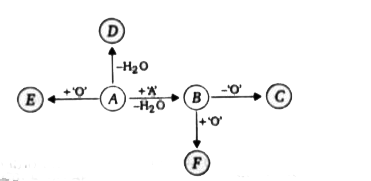
Q. Which of the following oxy acid does not have peroxy (-O-O-) linkage?View SolutionConsider the following sequence of reactions, if A is sulphuric acid, then give the answer of following questions
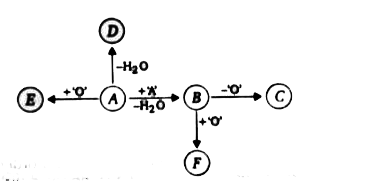
Q. In which of the following compound S-atom is `sp^(2)` hybridised:View SolutionConsider the following sequence of reactions, if A is sulphuric acid, then give the answer of following questions
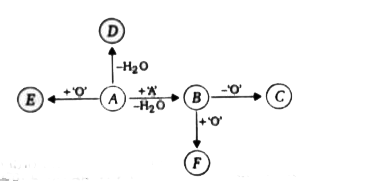
Q. Which of the following oxy acid is having S-O-S linakge?View Solution
LEVEL 3 (PASSAGE TYPE) questions and complete solutions for chapter p-BLOCK ELEMENTS of VK JAISWAL CHEMISTRY (HINGLISH) of Class 12
